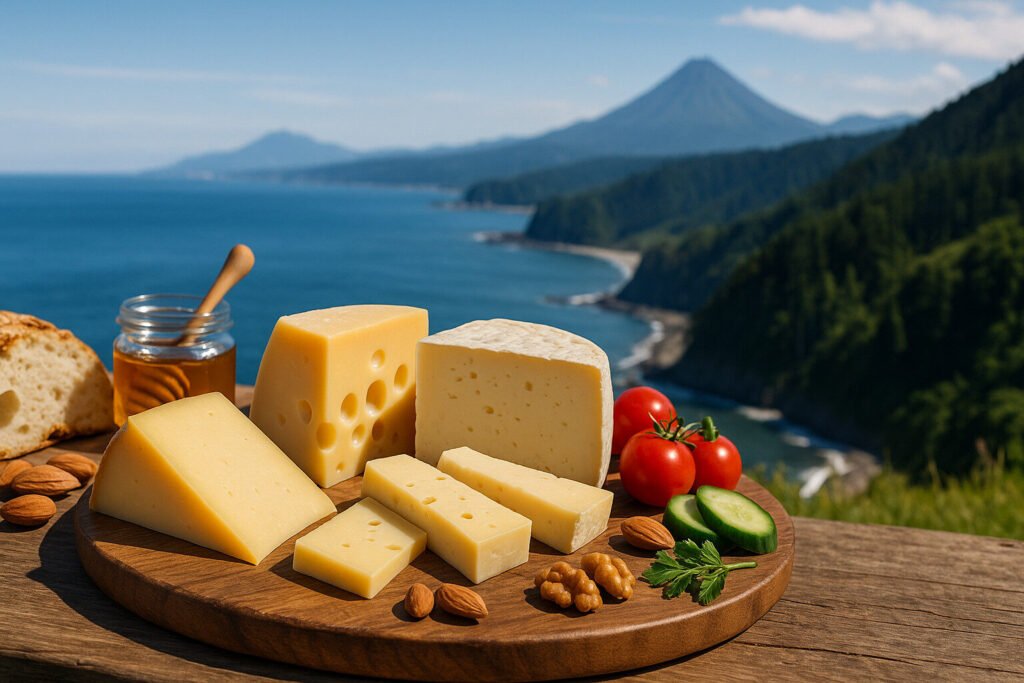Cheese Of Pacific Rim
Definition and Scope
Pacific Rim cheeses originate from countries bordering the Pacific Ocean, including the United States, Canada, Australia, New Zealand, and East Asian nations. This category encompasses both traditional European-style adaptations and innovative local creations using indigenous ingredients. The scope reflects a fusion of cheesemaking heritages with regional terroir and modern techniques.
These cheeses are characterized by their diversity, ranging from fresh chèvre to aged cheddars and washed-rind varieties. They often incorporate unique local milks such as water buffalo, sheep, or goat from specific microclimates. The category continues to evolve as artisans experiment with aging processes and flavor infusions.
Production Methods
Pacific Rim cheesemakers employ both traditional European techniques and contemporary technologies in their production. Many utilize temperature-controlled aging facilities to achieve consistent results across varying coastal climates. The use of pasteurized milk is common due to regulatory requirements in countries like the United States and Australia.
Artisan producers often focus on small-batch production with emphasis on local milk sourcing and seasonal variations. Techniques include bloomy rind development, brine washing, and natural cave aging adapted to local conditions. Some innovators incorporate Asian influences like sake lees or soy marinades during the aging process.
Sensory Profile
The flavor spectrum of Pacific Rim cheeses ranges from mild and creamy to intensely complex and earthy. Many exhibit brighter, more forward flavors compared to their European counterparts, with pronounced buttery and grassy notes. The terroir influence is evident in coastal varieties that may carry subtle marine or mineral characteristics.
Texture varies widely from soft-ripened triple crèmes to firm, crystalline aged cheeses. Color profiles often reflect the animals’ diet, with seasonal variations producing deeper golden hues in spring and summer batches. Washed-rind varieties develop distinctive pungent aromas while maintaining balanced flavor profiles.
Culinary Applications
Pacific Rim cheeses perform exceptionally well in both traditional Western cooking and fusion cuisine applications. Their balanced acidity and moisture content make them ideal for melting in dishes like gourmet burgers, flatbreads, and seafood gratins. Many artisanal varieties are specifically crafted to complement local wines and craft beers.
These cheeses have become essential components in modern charcuterie boards and cheese plates across restaurant menus. Their versatility allows pairing with Asian ingredients like yuzu, miso, and nori while maintaining structural integrity. Chefs value them for their consistent quality and innovative flavor combinations.
Regional Examples
California produces notable examples including Cowgirl Creamery’s Red Hawk and Point Reyes Farmstead Blue. These cheeses demonstrate the state’s mastery of washed-rind and blue-veined styles using local bovine milk. The Pacific Northwest contributes varieties like Beecher’s Flagship Reserve from Washington and Rogue River Blue from Oregon.
Australia’s King Island Dairy creates distinctive brie and washed-rind cheeses influenced by coastal terroir. New Zealand’s specialty includes Kapiti Kikorangi blue cheese and Whitestone Windsor Blue. Emerging producers in Japan and South Korea are developing unique varieties using local fermentation techniques and milk sources.

